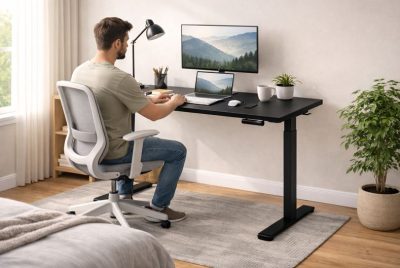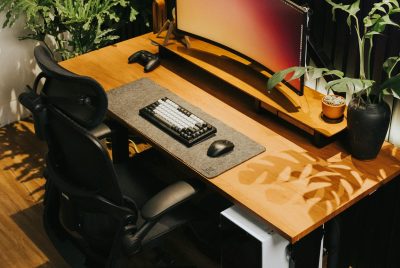Ergonomic Tools for Carpal Tunnel Every Professional Needs
We may earn a commission for purchases made using our links. Please see our disclosure to learn more.
If you’ve ever felt a sharp tingle in your wrist after a long day of typing, you know how distracting it can be. Carpal tunnel syndrome is more than a minor issue, as it can lower your productivity, disturb your sleep, and affect daily activities. Many professionals ignore the early signs, hoping the pain will fade, but it often gets worse. The good news is that with the right ergonomic tools for carpal tunnel, you can reduce strain, protect your wrists, and create a more comfortable workspace.
Why Ergonomic Tools Matter for Carpal Tunnel Relief
Compression of your wrist’s median nerve results in carpal tunnel syndrome. Your thumb, index, and middle fingers are all sensitive to that nerve, which is why the pain seems so particular. Our modern working habits, which include endless texting, prolonged mouse use, and hours of typing, are sadly not entirely wrist-friendly.
Ergonomic tools can help with this. Ergonomic devices, as compared with regular workplace accessories, are made to imitate the natural movement of the body. They promote a neutral wrist position, minimize awkward angles, and equally distribute pressure. By regularly using proper tools, you can reduce the chance of acquiring carpal tunnel syndrome in the first place as well as relieve any discomfort that may already be present.
Consider it an investment in your long-term well-being: a minor adjustment to your current equipment could save you years of agony or perhaps surgery in the future.
Top 5 Ergonomic Tools for Carpal Tunnel
1. Wrist Braces
Wrist braces are one of the simplest and most effective solutions. They keep your wrist in a neutral position, preventing excessive bending that compresses the median nerve. Braces are especially useful at night, since many people naturally curl their wrists while sleeping. Waking up with numb fingers is often a sign that a brace might help.
Professionals who type all day often benefit from lightweight, breathable designs that can be worn for long periods without discomfort.
2. Ergonomic Mice
Traditional mice force your hand into a flat position, twisting the forearm and straining the wrist. An ergonomic mouse—particularly a vertical one—positions your hand in a natural handshake posture. This reduces pronation and allows your arm muscles to relax.
Trackball mice are another option. Instead of moving the whole device, you roll a ball with your fingers, which limits wrist movement and lowers repetitive stress. Many users report immediate comfort after switching, especially during long work sessions.

3. Ergonomic Keyboards
Standard keyboards were never designed with health in mind. The straight, cramped layout forces your wrists to bend inward—a posture that aggravates carpal tunnel syndrome. Ergonomic keyboards address this problem by splitting or curving the keys so your hands can remain in line with your shoulders.
The result is a more natural typing experience. Once you adjust, you’ll notice less strain in your forearms and wrists, along with improved comfort during extended typing sessions.
4. Wrist Pads and Rests
Wrist pads often get overlooked, but they provide crucial cushioning when you’re typing or using a mouse. Without support, wrists tend to press against the sharp edge of a desk, which can compress nerves and blood vessels.
The best wrist rests are made of gel or memory foam, offering just enough give to keep your wrist elevated but not sinking in. They’re also portable, making them an affordable first step if you’re not ready to invest in larger ergonomic tools.
5. Ergonomic Pens
If your job involves frequent writing, standard pens can cause cramping and fatigue. Ergonomic pens solve this by offering a thicker grip or a special shape that reduces the effort needed to hold them. This helps keep your wrist and fingers relaxed, preventing strain during note-taking, journaling, or signing documents.
While small, this simple change can make a noticeable difference for people with carpal tunnel symptoms.

Recommended Amazon Products You Can Trust
Here are five well-reviewed, budget-friendly options to consider:
- Mueller Fitted Wrist Brace – Popular among professionals, it stabilizes the wrist without feeling bulky.
- Logitech MX Vertical Mouse – A premium vertical mouse that blends comfort with precision for everyday tasks.
- Kinesis Freestyle2 Ergonomic Keyboard – Adjustable split design to suit your typing angle and posture.
- Kensington Duo Gel Wrist Rest – Provides soft, cooling support for both keyboard and mouse use.
- PenAgain Ergonomic Pen – Its Y-shaped design helps reduce hand fatigue and encourages better writing posture.
Research and Expert Backing
Research strongly supports the role of ergonomics in preventing and managing carpal tunnel syndrome. For instance, a systematic review of ergonomic interventions found that workplace adjustments—such as braces, split keyboards, and posture-friendly setups—significantly reduced wrist pain and boosted productivity.
Another study on alternative mouse designs revealed that vertical and slanted mice lowered wrist extension and forearm strain compared to traditional flat models. These findings confirm what many professionals experience daily: switching to ergonomic tools leads to real relief.
Even the American Academy of Orthopaedic Surgeons recommends using braces and ergonomic devices as a first line of defense before considering surgical treatments.
Practical Ergonomic Practices Beyond Tools
While tools can transform your daily comfort, they work best when paired with smart habits:
- Proper workstation setup: Your chair should support your back, and your desk height should allow your elbows to rest at a 90-degree angle.
- Take regular breaks: A simple routine is to pause every 20 minutes, relax your eyes by focusing on something about 20 feet away, and use that moment to do a light 20-second wrist stretch.
- Stretching: Gentle wrist and finger stretches can improve circulation and reduce stiffness.
- Voice recognition software: Reducing typing time gives your wrists a much-needed rest.
To support full-body posture, consider upgrading to an ergonomic living room chair. Comfort shouldn’t end when you leave your desk.
Conclusion
Carpal tunnel syndrome may feel like an unavoidable part of modern work, but it doesn’t have to control your life. By choosing the right ergonomic tools for carpal tunnel—from braces to keyboards—you can create a workspace that prioritizes health and productivity. Pair these tools with good habits, and you’ll set yourself up for long-term comfort.
Small investments today can save you from major medical interventions tomorrow. Don’t wait until the discomfort turns into severe pain—adjust your workspace with ergonomic tools today.
FAQs
1. What are the most effective tools for carpal tunnel?
Wrist braces, ergonomic mice, split keyboards, wrist rests, and ergonomic pens are among the most effective tools.
2. What is the ergonomic support for carpal tunnel?
It means maintaining a neutral wrist position, using supportive tools, and adjusting your workspace to minimize nerve compression.
3. What are the ergonomics for carpal tunnel syndrome?
They include proper desk setup, regular breaks, stretching, and the use of ergonomic devices like mice and keyboards.
4. Which ergonomic tool can help prevent carpal tunnel symptoms?
Vertical mice and split keyboards are highly effective, as they prevent unnatural wrist angles.
5. Do ergonomic keyboards provide relief for people with carpal tunnel syndrome?
Yes, they reduce wrist strain by aligning your hands naturally, making typing more comfortable and sustainable over time.




